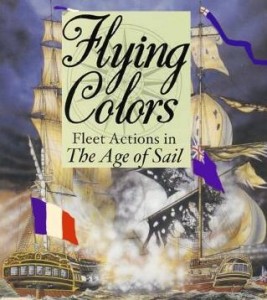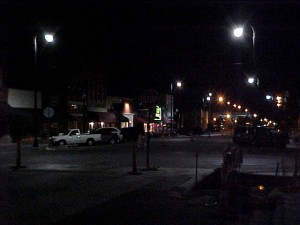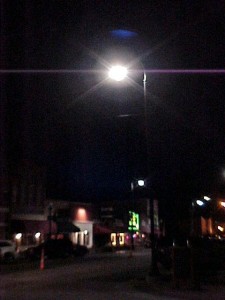I know. Depends on what words…
The Health Department Inspector came ‘round to give the kitchen a look. It passed with flying colors.
That is to say, he went over the inspection points and finding everything in order (I do need to put a screen over a drain…), we both signed the form and he went on his way. Or maybe you already knew what “passing with flying colors” implies. It’s a old nautical phrase that made reference to a victorious ship returning to the harbor with every flag, streamer, and banner hanging from the sails and masts. The ship was “flying its colors” to signify a victory or a successful return to port after a long journey.
I’m explaining the phrase because – as that relatively young inspector and I were talking – I asked him if he had called on a neighboring restaurant.
Me: They have the business down the block. Maybe you’ve called on them.
Inspector: No. I haven’t called anyone.
Me: I mean, visited them. You know – “called” on them.
He didn’t know. He had never heard the phrase before. After he left, I deduced that we pick up these old-style phrases from people around us who use them. When I was selling advertising years ago, at the end of the day the boss would ask me – How many folks did you call on?
He meant visit.
Business cards were referred to as “calling cards” years ago, since you handed them to the person you were “calling on.” If they were a new invention, I suppose we would hand our business card to the person we were “businessing on.” Who knows?
Some of these phrases die out over time. Others disappear due to contemporary replacement. That is – they “went missing.” (Things don’t disappear anymore.)
I know I’ve touched on some of these things in the past, and I don’t want to “beat a dead horse.” (It doesn’t matter how many times you land the riding crop, the dead animal won’t move any faster. In fact, a dead horse doesn’t move much at all on its own.) That’s another phrase that I’ve used over the years when I want to point out there is a risk of doing something over and over pointlessly. Like talk about how the English language changes.
Technology often makes a phrase irrelevant. A guest asked me the time of day, and I replied that it was ten minutes before five. Probably should have said four-fifty. That’s the way the digital clocks display the time these days. My guest likely had to mentally calculate the hour, like translating a Spanish phrase into English. In the old analog days, the minute hand was “before” the hour, or “after,” with the twelve representing the “hour.”
In fact, “o’clock” is a throwback of its own. In days gone by, the phrase would be asked, “What hour of the clock is it?” or What is the hour of the clock?” That wordy phrase – just like our “medicines” being shortened to “Meds” – was reduced to “o’clock.”
The executive used to ask his secretary to “take a letter.” He wasn’t asking to have an envelope picked up and moved elsewhere. It was a shortened version of “Take down my words and apply them to paper using a pen.” That was just too much of a mouthful. Take a letter.
Now we take a number to insure our place in a line or waiting list.
Some old phrasings change without much documentation. In years past, a twenty-five year old was said to be “five-and-twenty-years.” Maybe you remember the nursery rhyme in which “four-and-twenty” blackbirds were baked in a pie. Obviously, that’s twenty-four blackbirds – which makes for a pretty big pie. (Not that you’d get a single bite of that in my mouth.) I spent a little time trying to figure out when the word-order of numbers changed, but could not find a definitive answer.
Not that it makes a tinker’s damn of difference. (A tinker was an itinerant tinsmith who made his living traveling around and repairing household utensils. They were notorious for their swearing, so to hear such words coming from their mouths was almost insignificant. An extremely common thing had little value, and wasn’t worth a “tinker’s damn” or “tinker’s cuss,” as it was often phrased in England.
And if you’ve read this note to the bitter end, you may be wondering why the end is bitter. It isn’t. On the old sailing ships, the anchor rope was tied to a wooden post (called a bitt) on the front railing with a colored rope attached at the point the rope went over the deck and down into the water. If the sailor dropping the anchor reached the point of the rope where the rag was attached and the anchor had not yet reached the bottom, the water was too deep to anchor the boat. The rope had reached the “bitt-end” or “bitter-end” or – as a landlubber might say – “the very end.”
With that additional useless information, you have officially reached:
The Bitter End.
Come visit!
McHuston
Booksellers & Irish Bistro
Rose District
122 South Main Street, Broken Arrow OK!



